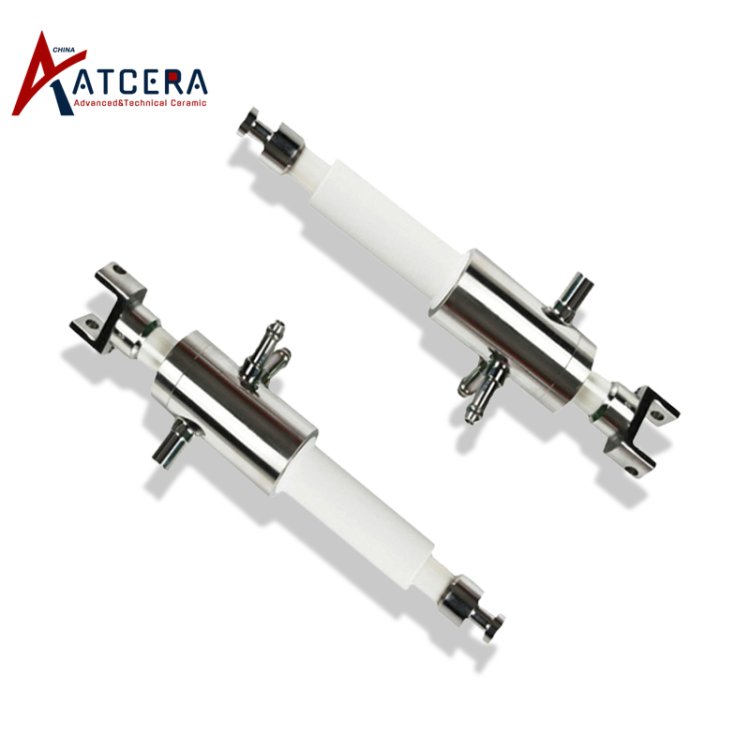The Role of Zirconia Pumps in Renewable Energy Systems
Discover Atcera’s premium zirconia pumps, designed for superior durability and performance in demanding industrial environments.

In the quest to develop sustainable energy solutions, renewable energy systems have become a critical part of the global effort to combat climate change. As wind, solar, and geothermal energy become more prevalent, industries are looking for advanced materials that can optimize the performance and longevity of their systems. One such material gaining significant attention is zirconia. Zirconia pumps, made from the highly durable and corrosion-resistant ceramic zirconium oxide (ZrO2), are playing an increasingly important role in the efficiency and effectiveness of renewable energy technologies.
The Need for High-Performance Components in Renewable Energy
Renewable energy systems, especially those based on geothermal, wind, and solar power, operate in environments that require robust and long-lasting components. Wind turbines must withstand harsh weather conditions, solar panels endure years of exposure to the sun’s rays, and geothermal systems manage extremely high temperatures and chemical interactions deep beneath the Earth’s surface. The components used in these systems must be able to perform efficiently while resisting wear, corrosion, and thermal degradation. Zirconia pumps offer a solution to these challenges, thanks to their exceptional properties.
Zirconia Pumps: A Durable Solution for Geothermal Energy Systems
One of the most prominent uses of zirconia pumps is in geothermal energy systems. Geothermal energy harnesses the heat stored beneath the Earth’s surface to generate electricity or provide heating. The fluids used in geothermal systems are often highly acidic, corrosive, and at temperatures reaching up to 300°C (572°F). These extreme conditions demand materials that can endure without degrading over time.
Zirconia, with its high-temperature resistance and excellent chemical stability, is ideal for pumping the fluids in geothermal energy systems. Zirconia pumps can handle the harsh conditions without losing efficiency or requiring frequent replacements. This durability ensures that geothermal plants can run at optimal performance levels for extended periods, reducing maintenance costs and downtime. Additionally, zirconia's inherent resistance to corrosion means that geothermal plants using these pumps can safely manage the aggressive fluids used in heat extraction without worrying about pump degradation.
Enhancing Wind and Solar Energy Systems with Zirconia Pumps
While geothermal energy may be the most direct beneficiary of zirconia pumps, wind and solar energy systems also rely on efficient fluid management systems. Wind turbines, for example, often require lubricating systems that help keep the moving parts in top condition. Zirconia pumps are ideal for handling lubrication fluids in these turbines due to their resistance to wear and tear from abrasive particles. This ensures that wind turbines operate smoothly even in the harshest conditions, which are typical in many wind farms.
Similarly, solar power plants, particularly concentrated solar power (CSP) systems, rely on high-efficiency pumps to circulate heat transfer fluids. These fluids are responsible for collecting and transferring the heat generated by solar collectors to power steam turbines. Zirconia pumps are an excellent choice for these systems, as they are capable of maintaining performance under high temperatures and chemical stresses. Their resistance to thermal shock and corrosion means that these pumps can continue operating effectively for long periods, helping solar power systems achieve better energy yields and reduce operational costs.
Zirconia Pumps in Energy Storage Systems
Another area where zirconia pumps are making a significant impact is in energy storage systems, which are crucial for stabilizing renewable energy grids. Energy storage systems, like those used in pumped hydro storage, often require pumps to move large volumes of water between reservoirs at different elevations. These systems depend on the reliability of their pumps to ensure efficient energy storage and release.
Zirconia pumps, with their ability to handle extreme conditions, can play a vital role in energy storage systems, particularly when combined with advanced pump designs. Their high resistance to erosion and corrosion allows these pumps to operate reliably over long periods, ensuring that energy is stored and released as needed, without loss of efficiency. Moreover, the reduced maintenance and longer lifespans of zirconia pumps lower the overall cost of maintaining energy storage infrastructure, contributing to the economic viability of renewable energy grids.
The Environmental Impact of Zirconia Pumps
Sustainability is at the heart of renewable energy systems, and zirconia pumps help further this goal by reducing the need for frequent replacements and minimizing waste. Since zirconia is incredibly durable, pumps made from this material last much longer than those made from traditional metals or plastics. This longevity reduces the amount of waste generated from replacing pumps that have worn out or corroded over time. Additionally, the efficient performance of zirconia pumps ensures that energy systems run at peak performance, contributing to the overall reduction of greenhouse gas emissions by improving the efficiency of renewable energy generation.
Moreover, zirconia is a non-toxic and environmentally friendly material. Unlike some metals, zirconia does not release harmful chemicals or pollutants into the environment. This makes it a safe and sustainable choice for renewable energy systems, aligning with the industry's focus on reducing environmental impact.
Conclusion
As renewable energy systems continue to evolve, the need for reliable, high-performance components grows. Zirconia pumps, with their exceptional resistance to wear, corrosion, and high temperatures, are increasingly becoming the go-to solution for enhancing the efficiency and durability of renewable energy technologies. Whether in geothermal, wind, solar, or energy storage systems, these pumps help ensure that these systems operate at their best, reduce maintenance costs, and contribute to the global shift toward sustainable energy.
The role of zirconia pumps in renewable energy systems is undeniable, and their use will likely expand as industries continue to embrace advanced materials for greener and more efficient technologies. By optimizing performance and enhancing the longevity of these systems, zirconia pumps are playing a crucial part in shaping a cleaner, more sustainable energy future.
What's Your Reaction?
















